ChannelCon EMEA 2025: AI, Empathy, and the Echo Chamber
From the moment Ellie, Shane, and I stepped into the Sofitel at Heathrow Terminal 5, I knew this year’s GTIA ChannelCon EMEA was going to be something special. Maybe it was the buzz of finally getting to talk AI and automation face-to-face again, or maybe it was just the fact we’d brought Shane along for his first ever tech conference. Either way, there was a sense that this one would hit differently — and it did.
We travelled up on the Sunday, settled in, and prepped for two full days of conversation, learning, and connection. And what unfolded over those days — 13th and 14th October — was a fascinating blend of optimism, realism, and a little existential unease about where technology is heading.
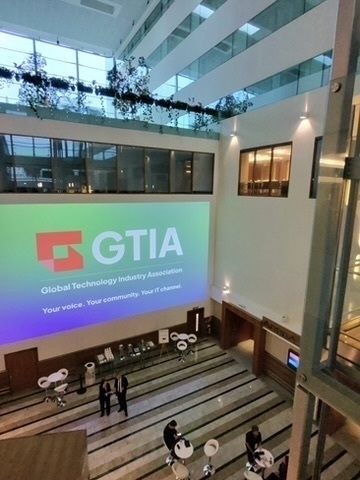
Monday Morning: My Genius Café
ChannelCon started with a bang for me. Before the main sessions even kicked off, I hosted a Genius Café for three IT providers who wanted to explore how AI and automation could transform their businesses. I expected the usual “how do we monetise AI” questions, but what I got instead was far more encouraging.
One provider had realised that the real opportunity wasn’t in selling AI licences — it was in selling knowledge. They talked about wrapping services around clients, helping them grow and evolve rather than just squeezing their existing customer base a little harder. It was refreshing and smart.
Another was in education, which always lights me up. They saw the potential for AI to reshape how we teach, learn, and support students, but also recognised that to lead that change, they first needed to understand it themselves.
And the last session was my favourite — we explored using AI as a learning companion. Tools that help us digest information faster, think deeper, and stay curious. The thread running through all of them was clear: even the “IT people” don’t feel on top of this AI wave. They’re just as busy, just as overwhelmed, and just as in need of clarity as everyone else.
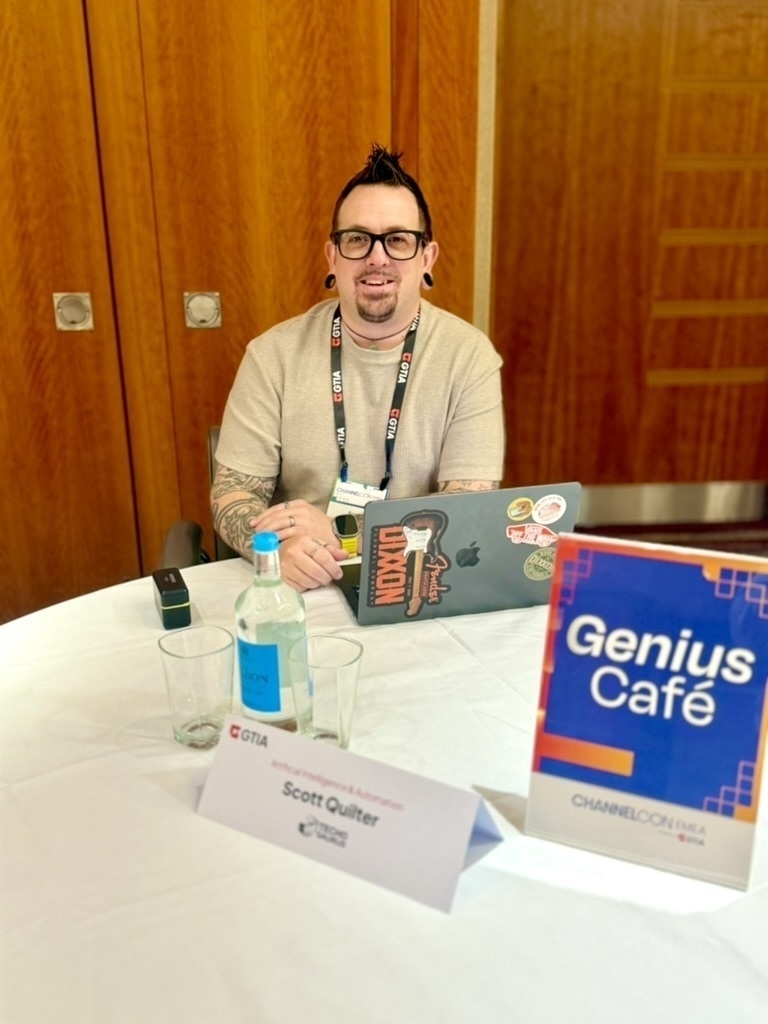
Keynotes: Between Boomers, Doomers, and Rockstars
Then came the big ones.
Sir Stephen Fry opened ChannelCon with the perfect mix of intellect and warmth. His keynote wasn’t just a talk; it was a journey through tech history, told in stories that made you stop and think. He reminded us that AI isn’t a neatly wrapped revolution — it’s a tidal wave coming toward us, filled with possibilities we don’t yet understand.
Fry called himself both a “boomer” and a “doomer.” A boomer because he sees the potential of AI to solve some of humanity’s greatest problems — climate change, disease, and knowledge itself. A doomer because it’s still in the same hands that gave us social media, and they’ve shown little appetite for guardrails or caution.
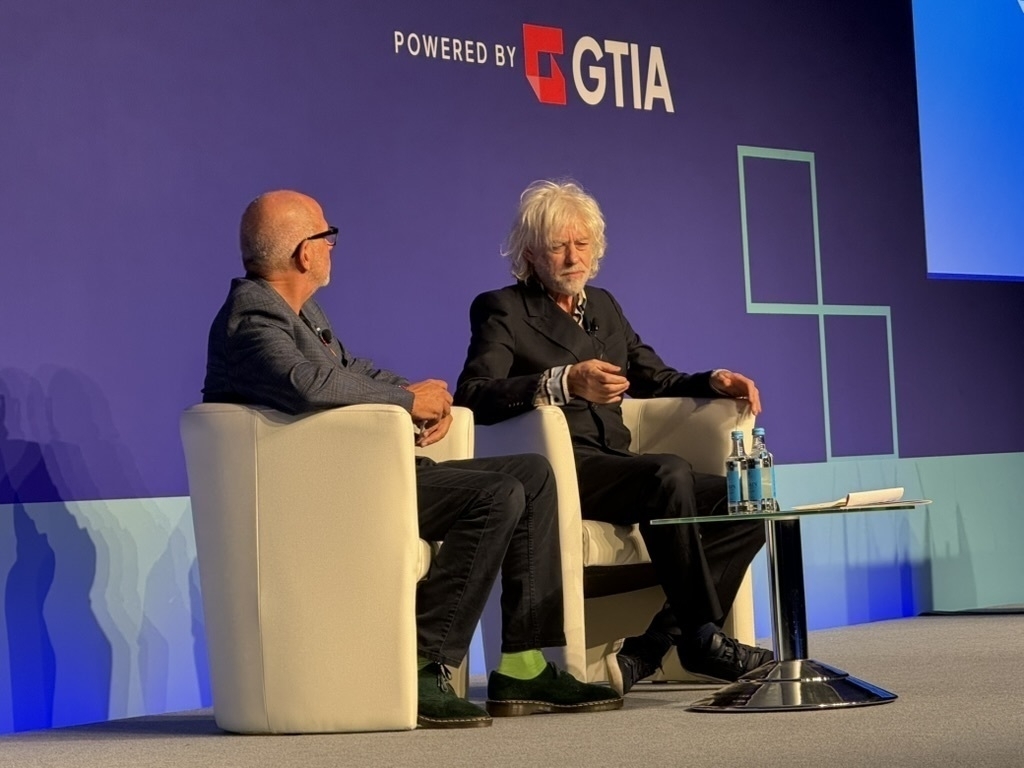
And then came Sir Bob Geldof to close the event the next day. Where Fry was elegant and precise, Geldof was raw and unfiltered — but just as profound. He tore into social media, describing it as the opposite of what it was meant to be. It no longer connects us; it isolates us. It reinforces our biases and keeps us endlessly scrolling for validation that never really comes.
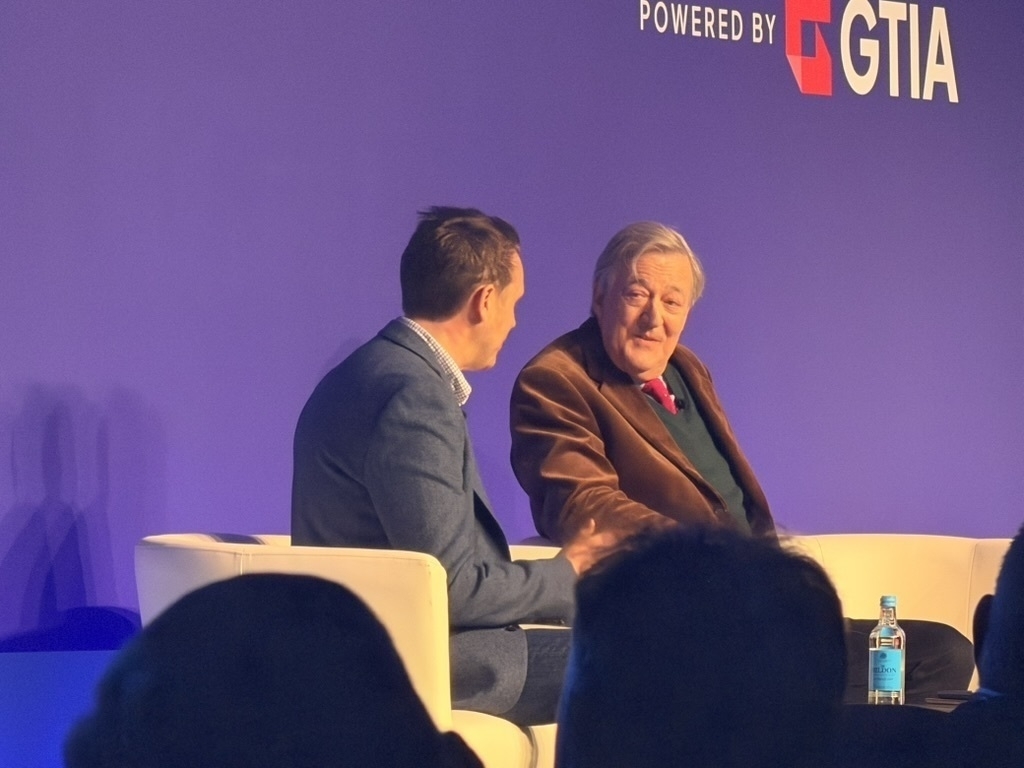
Less than 15% of social media time is actually “social,” and that hit home for me. I’d love to step away from it all, but as someone who teaches, shares, and builds a business in the open, it’s a necessary evil — a poisoned chalice I’m forced to sip from, knowing exactly what it’s doing to us.
Still, hearing two cultural icons both say, in their own ways, that AI is a mirror to humanity — reflecting our best and worst — was powerful. Both men made it clear that the next stage of progress won’t be purely technical. It’ll be ethical, emotional, and deeply human.
A Divided Industry
What struck me most across the sessions was how divided the industry still is when it comes to AI. Some are charging forward, genuinely integrating it into strategy and service delivery. Others are dipping their toes, while a fair few are still stuck in the “AI-washing” phase — using the label without understanding the substance.
GTIA unveiled some fantastic new material to help businesses navigate AI responsibly, and I had some great conversations with others who use AI as part of their daily workflow. But the overall picture is still patchy — a mix of who can, who can’t, who will, and who won’t.
It was also encouraging to see vendors getting creative, including a few now running with .ai domain names — which, amusingly, means they’re helping support the economy of Anguilla. A small but fun reminder that even domain choices have ripple effects in this global tech ecosystem.
Through New Eyes
Bringing Shane along was one of the best decisions we made. Watching him experience his first major tech conference reminded me how easy it is to get jaded when you’ve been doing this a long time.
His reflections afterwards were brilliant — thoughtful, human, and refreshingly honest. He talked about how Fry reminded him that imagination still matters more than algorithms, and how Geldof’s simple line — “the glue of humanity is empathy” — hit him right in the chest.
He noticed something I think many of us forget: that beneath all the dashboards, datasets, and deadlines, every conversation at ChannelCon ultimately came back to people. Diversity, belonging, curiosity, empathy — the things that make tech work in the first place.
And he was right. That was the undercurrent of the whole event.
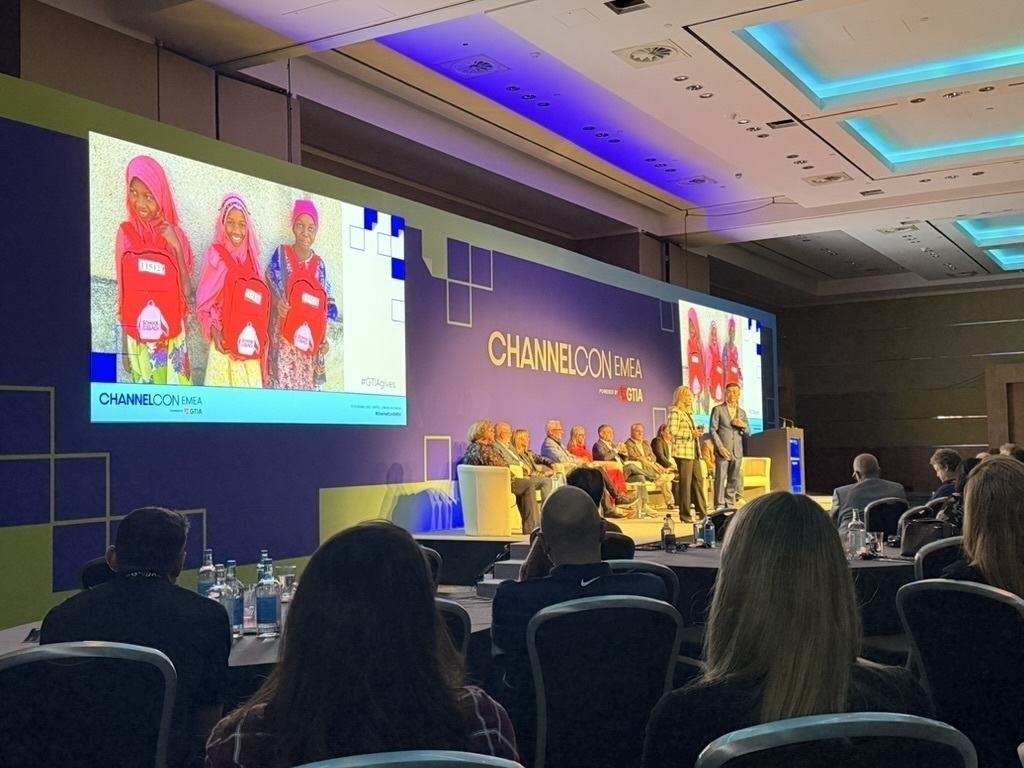
The Energy in the Room
The vibe overall was a bit mixed. Some sessions were buzzing, others felt half-full, which actually gave us the chance to have deeper, more personal conversations with the speakers and other attendees. It was nice to have that intimacy, though I’d love to see more people from the community showing up, engaging, and supporting their peers.
Events like this only work when the community brings its energy. Otherwise, it risks becoming a collection of parallel conversations — everyone doing their own thing in their own bubble, which, ironically, is what Fry and Geldof were warning us about.
Notes, Nuggets, and New Ideas
My notebook from ChannelCon is full of random gems and insights, but a few stand out:
- “Women in Tech” should just be “People in Tech.” The phrase itself can be unintentionally exclusionary.
- Knowledge-as-a-Service is a powerful concept — and it’s exactly what we deliver at Techosaurus.
- AI is at the capability level of a 4-year-old, but it’s learning fast.
- 20 trillion tokens = all of human language. That still blows my mind.
- AI can write for us, but only humans can imagine what to write.
- Perfection isn’t persuasive. Humans reject “too perfect” outputs instinctively.
- £87 billion is spent on SaaS every year, but only 15% is EU-owned.
- Every idea we send to AI is training someone else’s brain.
Each one of these sparked its own conversation in my head about ethics, ownership, and the nature of collaboration between humans and machines.
The Takeaway: Community is Everything
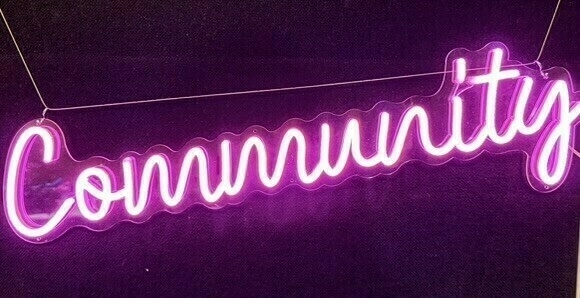
When I look back on ChannelCon EMEA 2025, it’s not the AI demos or the product booths that stay with me — it’s the conversations, the curiosity, and the reminder that community is everything.
We need to come away from the illusion of social media and return to genuine connection — celebrating each other’s wins, supporting each other’s growth, and remembering that we achieve far more together than we ever can apart.
Technology has always been about connection, but it’s up to us to make sure that connection stays human.